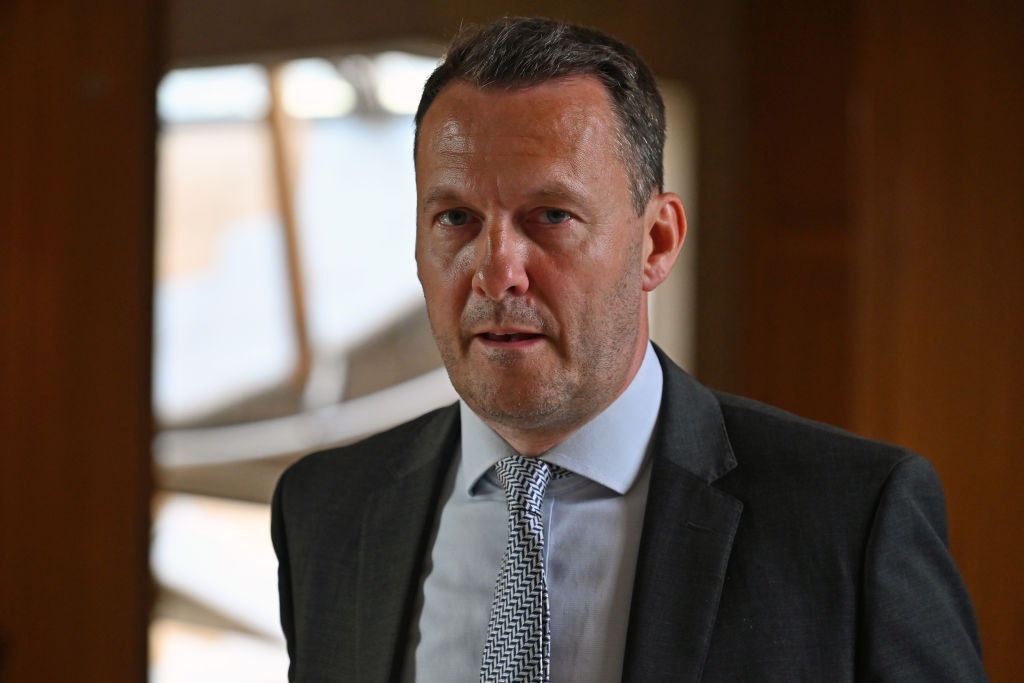The metrics of fear
How the UK has been scared into submission
“The perceived level of personal threat needs to be increased among those who are complacent, using hard-hitting emotional messaging.”
– SPI-B paper, 22 March 2020.
Fear is the most powerful of emotions and, as emotions are stronger than thoughts, fear can overpower the clearest of minds. We shouldn’t feel bad about being frightened. From an evolutionary perspective, it is key to our survival, it protects us from danger. And that is precisely what makes fear one of the most powerful tools in behavioural psychology.
Britain has been a world leader in behavioural insights since David Cameron set up the “nudge unit”. We now export behavioural psychology to governments and corporations around the world. The Government has used behavioural psychology to influence behaviour and encourage compliance during the Covid-19 epidemic. But has the nudge become a shove?
When the SAGE (Scientific Advisory Group for Emergencies) minutes were published, people were startled by the admission that the UK Government intended to deliberately frighten people to make them follow the lockdown rules. But governments have long-used use fear to control populations and influence behaviour, from the benign intentions of health campaigns such as the 1980s hard-hitting “Don’t die of ignorance” HIV campaign, to the more concerning end of the scale, such as the USA’s MK-ULTRA.
Public health policy has become a sick dog chasing its own tail
Can using fear be justified in a disaster? SPI-B (Scientific Pandemic Influenza Group) clearly think so. And many people might think that a little bit of fear is an acceptable trade off if it is for the greater good. Once it became clear that herd immunity was unpalatable to the British media and public, the government changed tack and imposed lockdown. Not expecting compliance, the behavioural scientists of SPI-B recommended that the government use “hard-hitting emotional messaging”, enact legislation, use the media to increase the sense of threat and instigate social disapproval to ensure people followed the guidance.
The British public have been subjected to a 24/7 onslaught of fear from the daily death tolls, to the (mis)use of statistics, tone of messaging and, in a particularly low note, public health messages imploring the young, “Don’t kill granny.”
From the beginning, the Government and media reported the daily death toll with macabre dedication. Epidemics sell better than sex. I spoke to David Paton, Professor of Industrial Economics at Nottingham, University, who has taken a keen interest in the reporting of data during the epidemic, he said:
The metrics always seem to err on the side of maximising numbers, and it takes time to undo that, like with the Public Health England death counting. The BBC continued to report PHE death data even though the government had officially suspended it, so that had the effect of people thinking deaths were higher than they were. There is also a case for saying we don’t report daily cases and deaths for flu, so just reporting by day is damaging in itself.
Humans can’t sustain fear indefinitely: we get bored, we relax or, some might say, complacent. How to sustain the belief in the necessity of restrictions to our lives over six months? After daily death tolls dropped, focus turned to rate of transmission and cases, which have since taken over the headlines.

And after all, if there were no cases, how would we know we are in an “epidemic” at the moment? If you looked at the deaths plotted on a graph but avoided all media, you would think it’s over.
One of David Paton’s worst data moments during the epidemic came mid-April:
It was clear deaths were going down, but Chris Whitty said we hadn’t seen the peak yet. That was a big one for me. He was downplaying the downward trend in deaths. I think there were obviously deliberate policy decisions to make people take it seriously, but the data should be presented factually and then interpreted.
Covid-19 deaths must be balanced against cost-benefit analysis
Some data has crumbled at the merest whiff of a challenge. Sadiq Khan quoted some quite astonishing figures: that someone not wearing a face covering had a 70% risk of transmitting the virus, but by wearing a mask the risk was reduced to 5%. The source was the British Medical Association. I contacted BMA who claimed that their Medical Academic Staff Committee and Public Health Medicine Committee had produced the calculations. Seven emails, two tweets and one phone call later, it turned out these figures had not been calculated by the BMA, but “based on a presentation by Chinese infectious disease specialist Professor Wenhong Xhang in March.” They withdrew their claims only after they had been published via national broadcast and print media. Associated Press Factcheck came to the same conclusion as I did and labelled the claims “partially false”.
Fear is a depreciating asset and we are now in a time of short selling. Cases which don’t translate into deaths can’t sustain the fear, which is perhaps why Chris Whitty and Patrick Vallance delivered a “Shock and Awe” presentation about cases and hospitalisations. Metrics selected for maximum impact have given way to fantasy. A red chunk of predicted-but-not-predicted cases loomed like a child’s red crayon drawing of a monster.
It has been reported that the decision to present 50,000 cases was taken carefully. The bigger the number, the greater the fear, the more compliance? A scientist deeply embedded in Whitehall told me:
You can’t do a pandemic without honesty and trust, but the problem is people don’t trust the government anymore. The Whitty and Vallance press briefing was the ultimate Psy Op. Even really intelligent people have so much cortisol flooding through them that they can’t think rationally. I know people who believed the fantasy graph. Now they’re sold on more lockdown.
While death tolls and cases have dominated the headlines, other metrics were quieter casualties. Discussion of all impacted metrics is essential for people to make cost-benefit analyses. Covid-19 deaths must be balanced against unemployment, the lengthening NHS waiting list, missed cancer screenings, national debt, business closures, calls to suicide lines.
What is the result of all this fearmongering? The messaging that was initially designed to help us stay safe by scaring us has been so effective that Britain quickly became the most frightened nation in Europe, with people significantly over-estimating the spread and fatality rate of the disease. The British public think 6-7% of people have died from coronavirus – around one hundred times the actual death rate based on official figures. 76% think there will be a second wave – more than any other country.
Is the use of statistics actually effective in encouraging compliance? Only 18% of people self-isolate after developing symptoms and only 11% quarantine after being contacted by Test and Trace. Their reported behaviour falls far short of their intended behaviour. Fear is a natural component of the human psyche, but it looks like Boris Johnson’s claim about us being a “freedom loving” nation is undeniable too.
Public health policy has become a sick dog chasing its own tail. We need to break the circuit of fear. No more metrics presented in isolation. No more graphs of monsters with no basis in material reality. Politicians need to present the unedited truth, and not treat the general public like children. Let’s grow up and face the numbers.
When deaths are as close to zero as they might ever be, what are we still afraid of? From roadside signs telling us to “Stay Alert“, the incessantly doom-laden media commentary, to masks literally keeping the fear on our face, we’ve become afraid of each other – but perhaps we need to be more afraid of how easily we are manipulated.
Enjoying The Critic online? It's even better in print
Try five issues of Britain’s most civilised magazine for £10
Subscribe














